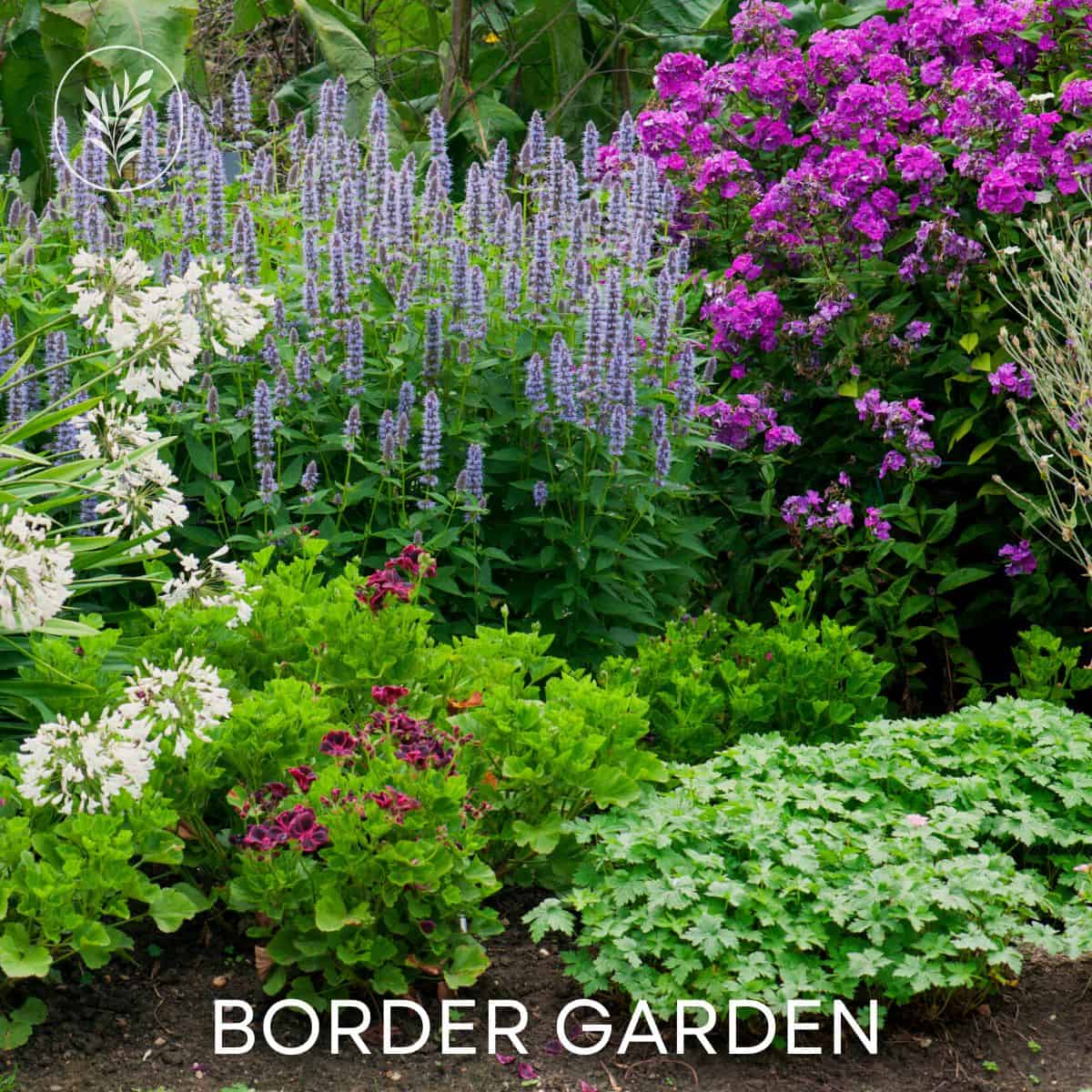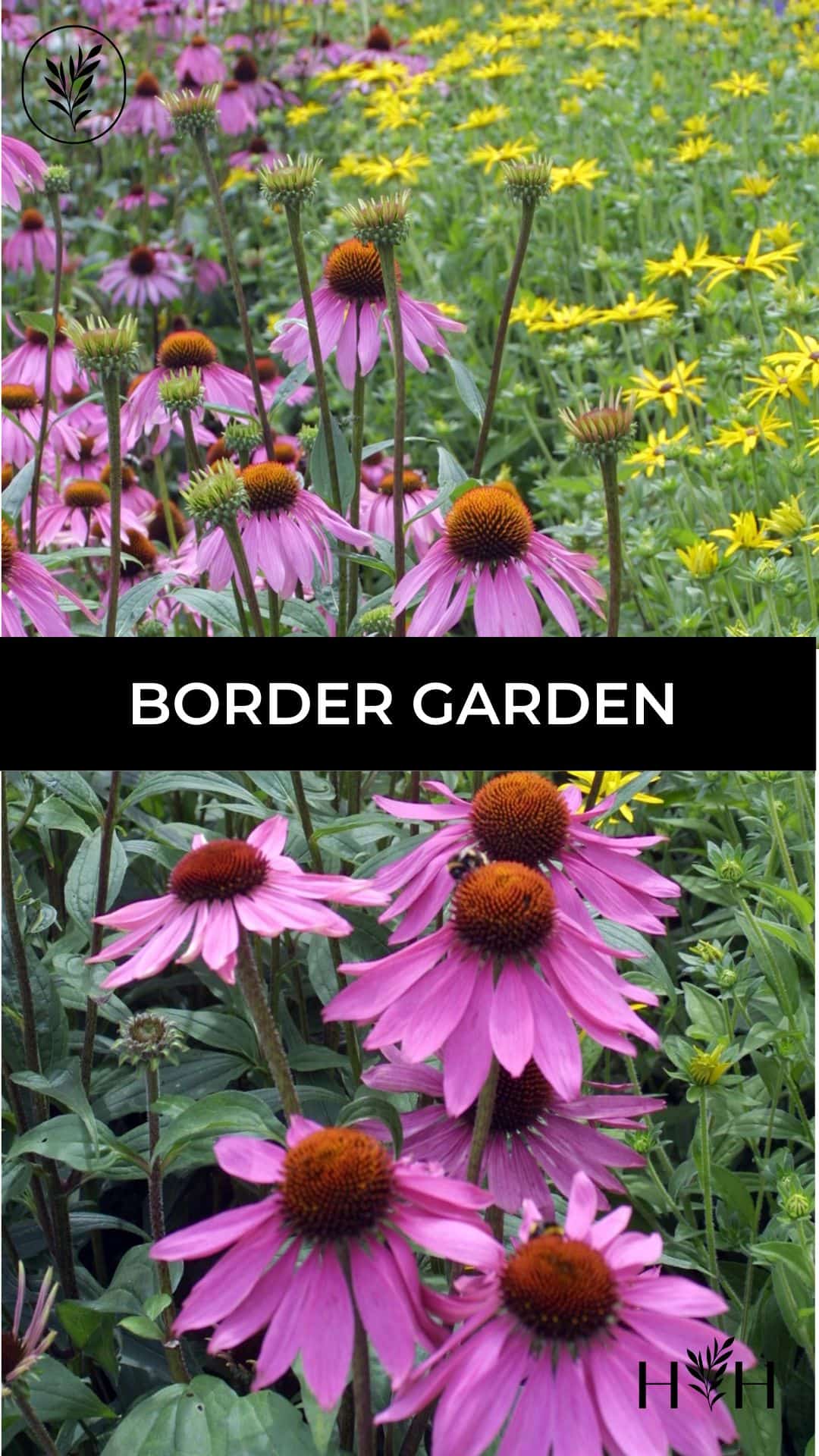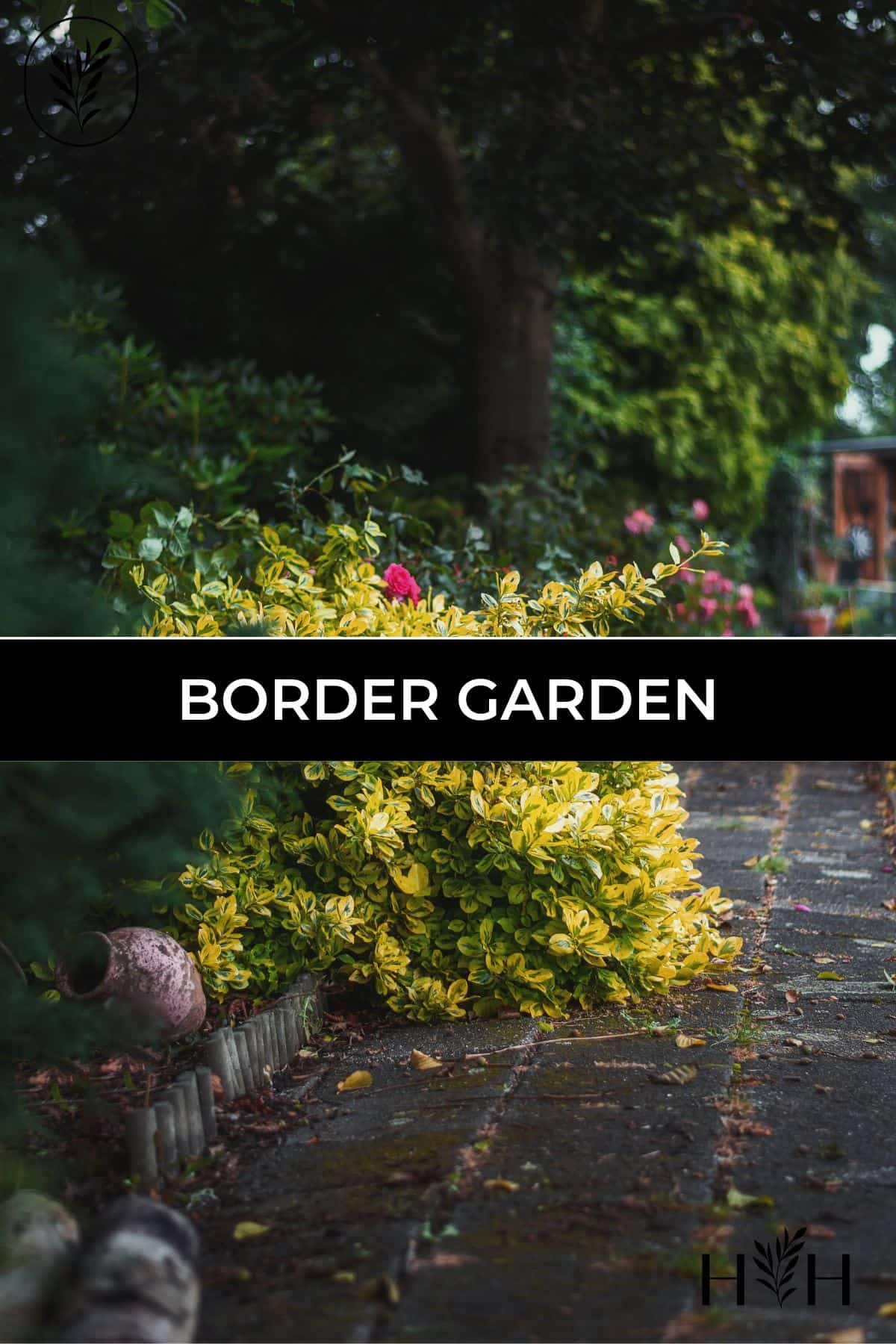Looking for a classic way to bring visual interest to your yard? It’s time to pack in the perennials! And there’s no better way than a flowering border garden.
The border garden, also called a herbaceous border or perennial border garden, is a mainstay of classic garden design. These lush walls of showy plants fill the seasons with color and texture. There is always something in bloom to enjoy.
Now let’s look at how to create your own border garden.
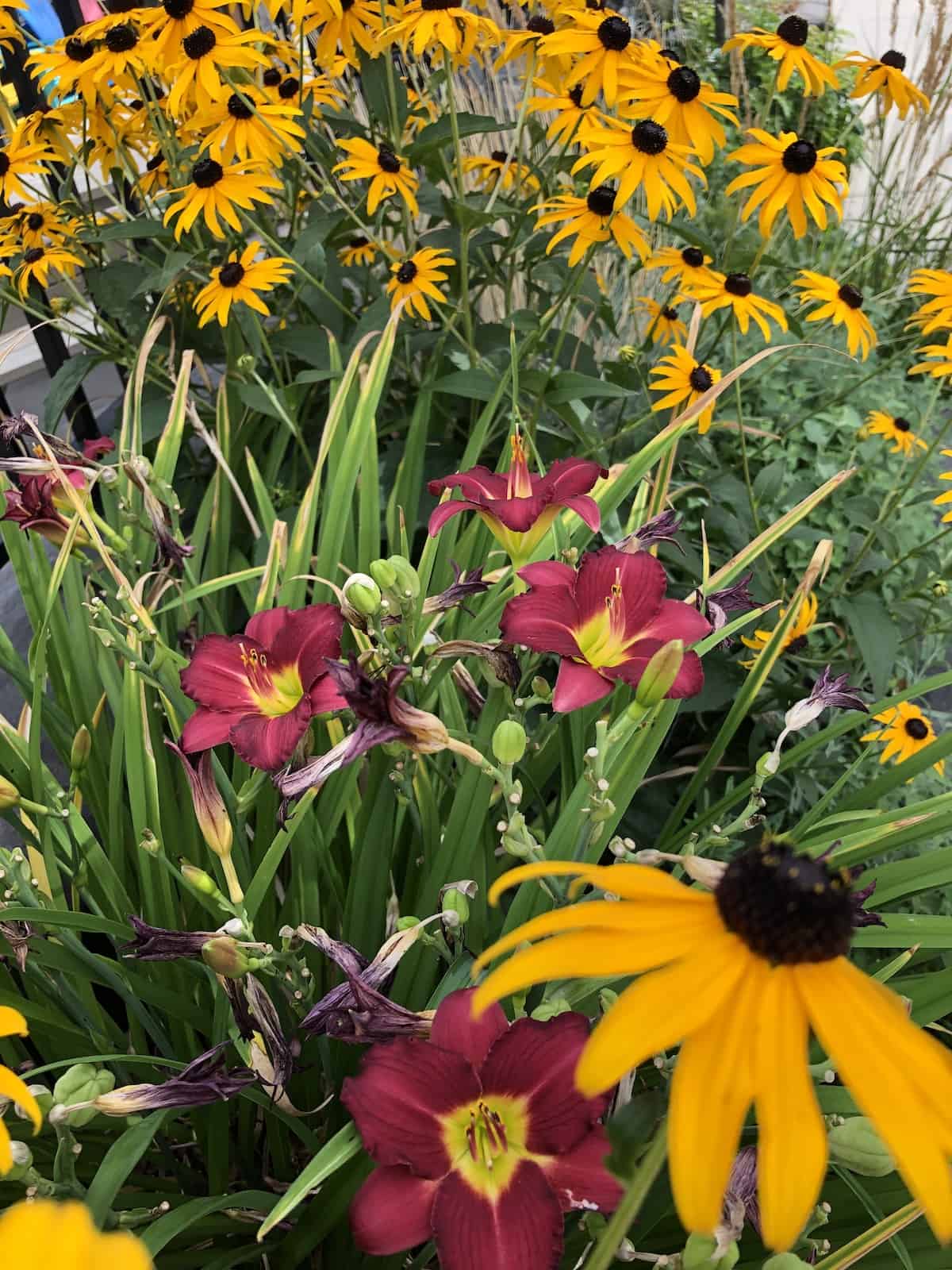
The perennial border garden
A classic English border garden is lush with flowering herbaceous perennials. These perennial plants come back each year for a reliable, long-lived floral display. As the name suggests, border gardens are located on the perimeter of structures and properties, including in front of hedges, fences, walls, and property lines. Traditional border gardens typically employ British cottage garden plants. There is always something in bloom!
A great border garden has a strong year-round permanent structure, pleasing textures and form, focal points, an overall sense of unity, and a general scale and size that complements and fits in well with its surroundings. There’s a lot to consider, and the process of creating a border garden is more of an ongoing passion project than a weekend item to check off the to-do list. There are many reasons these gardens are so beloved!
Border garden design
Border garden design was pioneered and perfected by Gertrude Jekyll, a famous British horticulturalists. She designed hundreds of borders around the UK and Europe in her lifetime, many of them with herbaceous perennial borders. Her “hardy flower borders” have been described as being imagined by a painter rather than a gardener.
Herbaceous perennial plants are underpinned in the design with structural permanent plantings like trees and shrubs. This gives the garden a year-round foundation and form. Other design features include focal points, like a concrete bird bath, obelisk trellis, or arbor. For texture, certain herbaceous perennials and ornamental grasses may be left standing over winter to give 4-season interest.
Border garden design almost always includes the choice of a cohesive color palette. The colors chosen should complement the surrounding structures and be in keeping with the goal of the design. There are countless shades of every color available in different flower plants as modern cultivars are introduced. Take the time to research and order the specific named variety that’s the correct shade.
In addition to the color palette in general, repetition of color is also important. This can be used to draw the eye along the border garden. Both repetitions of color and repetition of form are key to border garden design. It’s fun to include different forms of flower blooms within a color family, and even non-bloom forms like ornamental grasses that fit the color palette.
“Tall plants go in back and layers and tiers of plants are added as the composition is built towards the front, always keeping in mind that something will be fading while something else is coming into bloom. In the grandest of herbaceous borders, the same plants are often grouped in small clusters or they can spread out; cohesion is gained by repeating them.”
Cultivating Garden Style: Inspired Ideas and Practical Advice to Unleash Your Garden Personality, by Rochelle Greayer
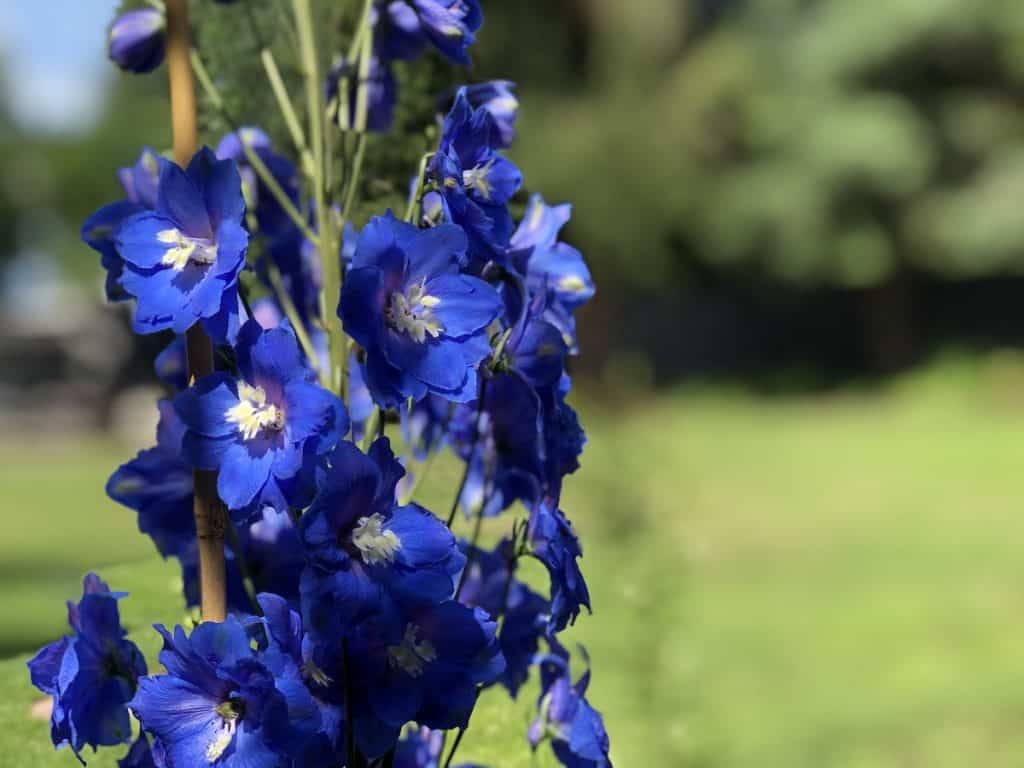
One defining feature of a border garden design is that tall plants are sited in the back while shorter plants are placed in front of them. This creates a visual wall of blooms when the flowers are in season. Check the mature heights for specific perennials before planning your border garden so that the tall plants are in the back, behind the shorter ones.
Another defining feature of border gardens is that plants are usually sited in”drifts”. Designers will call for 3, 5, or 7 individual plants to be planted in a small section, and will specify that they are all the exact same type. Drifts of one type of plant “drift past” and intermingle with other drifts to create a woven design. To create your own drifts, buy perennials in uneven numbers (3,5,7) and site them into amorphous shapes that are about 1 yard in surface area.
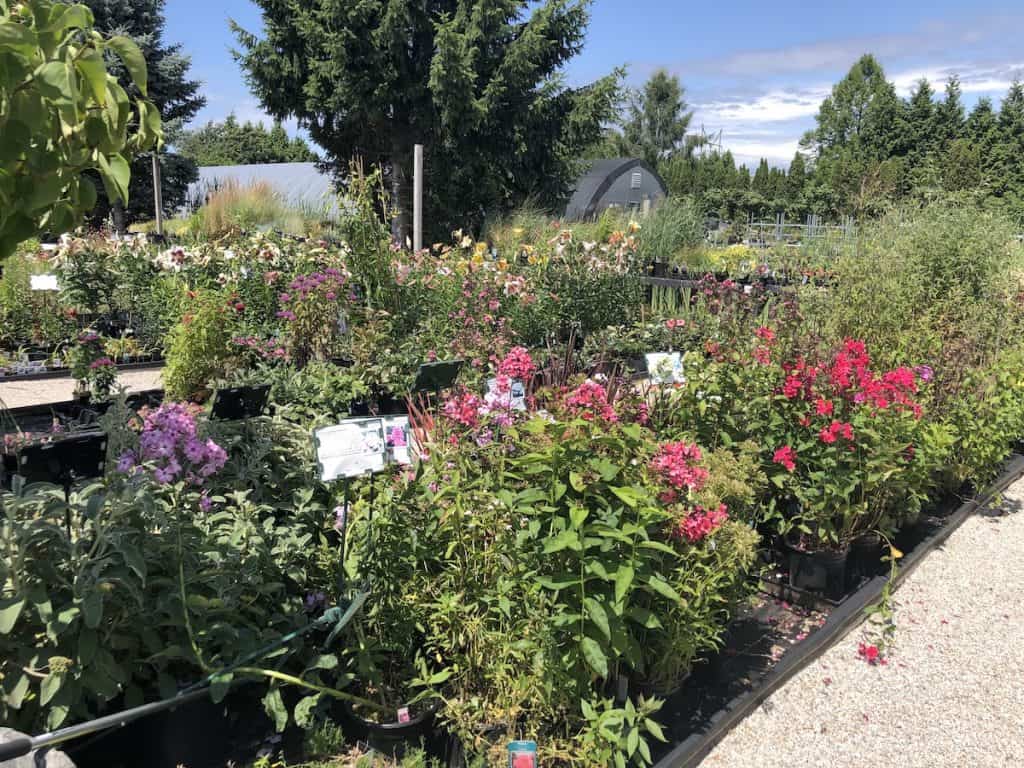
Plants for a beautiful border garden
Classic floral border gardens are most often situated in sunny spots (although shade border gardens are certainly possible). You’ll need a variety of heights, including tall plants and very short plants. Try to choose plants that bloom in different months/seasons so there is always something in bloom. Not only will the garden look beautiful, but the overlapping blooms will help support beneficial pollinators.
“My first suggestion is to visit local nurseries and find plants that inspire you. These choices will suggest a complementary or contrasting companion to enrich the border. If you select a bold-textured plant, this may initiate a search for fine-textured plants to accompany it.”
Fine Gardening’s Beds & Borders, Design Ideas for Gardens Large and Small, by the Editors of Fine Gardening magazine
There is a list below of perennial plants for a herbaceous border garden. The list is arranged by height, as border gardens generally are arranged like a group photo, with the tallest at the back and the shortest at the front. Check out each height category and choose your favorite plants or simply a combination you love.
Short plants (1 foot tall and shorter)
Medium-height plants (1-3 feet tall)
Tall plants (3+ feet tall)
- Foxglove
- Delphinium
- Monkshood
- Hardy Hibiscus
- Hollyhock
- Joe Pye Weed
- Maximillian Sunflower
- Artemisia (Mugwort)
- New England Aster
- Campanula (Bellflower)
- Cleome
Now that we’ve thought about the height a little bit, let’s look at which flowers bloom in which general season. Below is a list of flowering perennial plants arranged by the season of bloom. The list includes flowering shrubs like hydrangea, snowball viburnum, roses, weigela, and lilac, as well as some easy self-seeding annuals like zinnia.
Consider your choices from each height category and lay out a general bloom calendar for your border garden. Do you have some spring bloomers, summer bloomers, and fall bloomers? Are there any months that could use a bit of an added floral boost? Can you fill in the blanks of blooms with ornamental trees, shrubs, or grasses? Fill out your plant list to keep the show going throughout the growing season.
Spring bloomers (Mar-May)
- Lavender
- Phlox
- Sedum
- Hellebore
- Phlox
- Primrose
- Euphorbia
- Pasqueflower
- Snowball Viburnum
- Weigela
- Lilac
Summer bloomers (Jun-Aug)
- Lavender
- Peony
- Columbine
- Astilbe
- Asiatic Lily
- Daylily
- Delphinium
- Baptisia
- Hydrangea
- Roses
Fall bloomers (Sept-Nov)
- Sedum
- Rudbeckia
- Helianthus
- Echinacea
- Zinnia
- Monkshood
- Hardy Hibiscus
Edging materials for border gardens
Border gardens generally have some sort of garden edging material to separate the garden bed from the adjacent lawn. Whether you’re using bricks, cut sett stones, or a half-moon edger, take care to select and maintain an edging type for your border garden to keep the lawn or pea gravel from sneaking in.
“It may be a small contribution to ornamental horticulture, but I have a theory that if the edges of your perennial borders are crisp and attractive, you are well on the way to a satisfying garden.”
Fine Gardening’s Beds & Borders, Design Ideas for Gardens Large and Small, by the Editors of Fine Gardening magazine
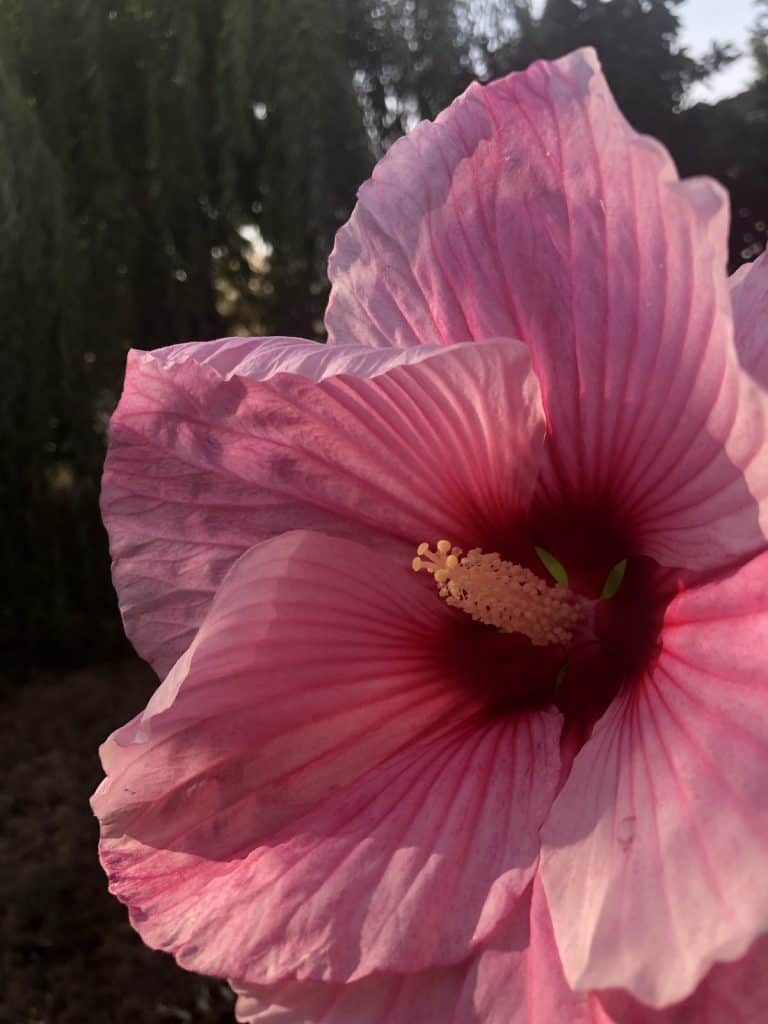
Planting a perennial border garden
Always consider your design and try to get a majority of the live plants before planting a border garden. Take the time beforehand to select and order the right cultivars to match your climate and design. Specialty varieties can be ordered from local nurseries or (increasingly) online.
When you’re ready to plant, take care to mark out where each of the different types of plants will go. You can simply place the potted plants in their general location, or go pro and measure/mark out each drift and planting target spot. Whatever your style – be sure to take a step back now and then to take in the whole border garden scene before lifting up the shovel.
“Unload all the plants and set the where you intend to plant them before digging anything in. Make sure you are happy with the composition while it is still easy to move things around. As you are adjusting your layout on the ground, keep in mind how the plants will mature.”
Cultivating Garden Style: Inspired Ideas and Practical Advice to Unleash Your Garden Personality, by Rochelle Greayer
When planting a border garden, it’s always easier to start at the back and work toward the front of the bed. Start with any large trees and shrubs that will be used as structural plantings. Large trees may require a machine to plant, such as a small backhoe.
Once the large trees and shrubs are in, plant the perennial flowers and ornamental grasses, starting from the tallest at the back and working towards the shortest in the front. Double-check the type and height of each plant as you go.
The perennial drifts will fill in throughout the season and during future years. Make a plan to dig up and divide the perennial flowers and grasses about every 3 years. This is a lot of work, but it does reap rewards! Your border will keep from looking overgrown and you’ll have lots of free plants to share with friends, neighbors, and other gardeners.
More border garden ideas
For more border garden ideas, visit this Pinterest board: https://www.pinterest.com/home4theharvest/border-garden-classic-herbaceous-perennials/


